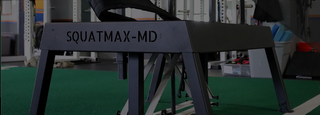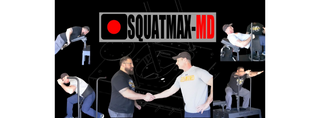
USE CODE "BC$50" TO SAVE $50 ON YOUR PURCHASE!
"Assembling my new SQUATMAX-MD PRO with founder Brian Henesey"

SQUATMAX-MD
SquatMax-MD is the only belt squat device on the market proven to activate the lower body musculature similarly to a barbell. Additionally, SquatMax was the superior choice for activating the entire lower body musculature in a Head-to-Head Belt Squat Study versus a cable and lever design.
SquatMax-MD’s patented free-weight design is where SquatMax truly shines. The ability to differentiate itself from others is anchored to a fixed point belt squat design. The design allows for an authentic free-weight squat movement that evokes the same lower body activation and neuromuscular patterns as a barbell back squat.
“The SquatMax-MD is the best belt squat product to stimulate the squat and deadlift. The difference is the direct vertical line of drive. Other lever and pulley belt squats that I have used either bother my knees or my hips- they are unnatural, with pulleys or levers that cause unnecessary shearing forces.” ~ Brian Carroll, First lifter to Squat 1300lbs
"4 Options for your Belt Squat to build a MONSTER SQUAT"

"5 takeaways on how I built the worlds biggest squat (1306)"

"THIS is the best machine in my Gym"



